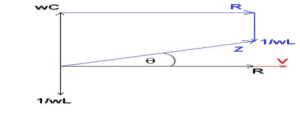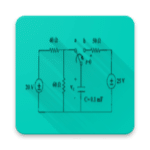Circuits (Elec-A1) - Solutions & Support
Your credible resource for help with your electrical exams.
Your exam is fast approaching. You might be working a job and have a family that needs your time. The last thing you want to do is spend $1,000 on a course to re-learn this material.
If that sounds like you, our Circuits (Elec-A1) help is for you.
About: The Circuits exam is written nationally for electrical aspiring engineers. The code for this exam is:
- Electrical - 16-Elec-A1 (or you may see it like 07-Elec-A1, YY-Elec-A1, Elec-A1)
The exam tests candidate’s understanding and knowledge of circuits.
Format: 3-hour long, closed book exam. Out of the six questions that are asked in the exam, only five need to be attempted.
Dates written: The exam is offered twice every year in the months of May and December.
Approved aids: Since the course is highly computational, non-programmable Casio or Sharp calculators are permitted.
After reviewing several previous exams, a pattern in the questions emerges. Here is a summary of the different question types.
Question no. 1: DC State Analysis
The first question tests your knowledge about KCL (Kirchhoff’ current law) and KVL (Kirchhoff’ voltage law), and your concepts about series and parallel circuits. It is a numerical question. You will be asked how, for example, to calculate the value of resistance, current or voltage in the circuit. Your understanding of DC circuit analysis will be tested here. You will have to use both principles described by Kirchhoff: the Current law and the Voltage Law:
- Kirchhoff’s Current Law or KCL; the algebraic sum of ALL the currents entering and leaving a node must be equal to zero, I(exiting) + I(entering) = 0.
- Kirchhoff’s Voltage Law or KVL; the algebraic sum of all voltages within the loop must be equal to zero. This concept is also known as the Conservation of Energy.
Question no. 2: Thevenin theorem (DC Network analysis)
The second question is a numerical problem regarding Thevenin Theorem. You will be asked to calculate. The Thevenin Equivalent circuit (Vth and Rth), load impedance RL and maximum power dissipation across RL
Thevenin’s Theorem is a method to simplify a given network to an equivalent circuit composed of a single voltage source, series resistance, and series load.
Steps for Thevenin’s Theorem:
- Find VTH (Thevenin source voltage)
- The second step involves finding RTH (Thevenin Resistance)
- The third step is to draw the Thevenin equivalent circuit.
- Finally, analyze the voltage and current for the load resistor
Question no. 3: AC State Analysis
Question three is regarding AC state analysis. You may be asked about solving the series and parallel RLC and perform AC state analysis and solve a circuit involving three basic passive components: resistors (R), inductors (L), and capacitors (C) which have different phase relationships to each other when connected to a sinusoidal AC supply.
There may also be transients such a switch closing/opening or sources changing value at t=0. In these cases, it will be necessary to find the time constant τ (tau).
Question no. 4: Node and loop analysis
The fourth question is also a numerical problem. It tests your knowledge of node and loop analysis. It may ask to write mesh current equations in phasor for the given mesh currents shown along with mesh currents in loops in the given circuit. The question may involve calculating voltage at t = 0. This question approached by referring to the node and loop analysis.
Steps for the Loop Analysis
- Step 1: Choose the loops in the circuit diagram
Step 2: Show the various loop currents and the polarities of related voltage drops. - Step 3: Before applying KVL, look for any current sources. As they can be expressed in terms of current variables added in step 2, open circuit these and draw new loops (also called “super meshes”).
- Step 4: After the step 3, we can apply KVL to the remaining loops, which include the supermeshes and loops without current sources. A loop cannot have a current source for KVL.
- Step 5: Finally, solve the equations obtained in step 3 and step 4 and obtain required unknowns.
Question no. 5: Phasors and Impedance
The fifth question consists of calculating supply current, power factor of source voltages and calculating complex power, real power and reactive power of the source. This also involves drawing phasor diagram of source voltages and source currents.
Please remember the following to solve phasor and impedance related questions. This can then be described by using phasors as follows:

Given:
![]()
and
![]()
Question no. 6: (Laplace transform circuit Analysis)
This question specifically tests your knowledge for Laplace transform circuit analysis. You will be given the circuit with initial conditions and a transient which will occur at t=0. You will be asked to draw Laplace equivalent circuit and/or asked to calculate the voltages or currents in the s domainor time domain.
Typically, the last page of your exam will be a helpful appendix that will list useful Laplace transforms required to solve the problem.
- Electric Circuits, Nilsson, James W. and Susan Riedel, latest edition. Prentice Hall. ISBN: 978-0133760033
- Fundamentals of Electric Circuits, Alexander, Charles and Mathew Sadiku, latest edition. McGraw Hill. ISBN: 978-0078028229
- Electrical Engineering: An Introduction, Schwarz and Oldham, latest edition. Oxford University Press. ISBN: 978-0195105858
Based on your education and experience, we've put together a few different options to help you out. If you are feeling confident in the material and believe you are knowledgeable on the exam topics, then a less expensive option may be best for you. For those who need more help and support, the more expensive packages would be recommended.
$399, $319, $219

| Format: | Solutions & support |
| Skill level: | All levels |
| Language: | English |
$219+tax CAD
-
1 Exam solution
(May '19) - Cheatsheet
- 1 year of access
$319+tax CAD
-
2 Exam solutions
(May '19 & May '17) - Cheatsheet
- 1 year of access
MOST POPULAR
$399+tax CAD
-
3 Exam solutions
(May '19, May '17 & Dec '16) - Cheatsheet
- 1 year of access
